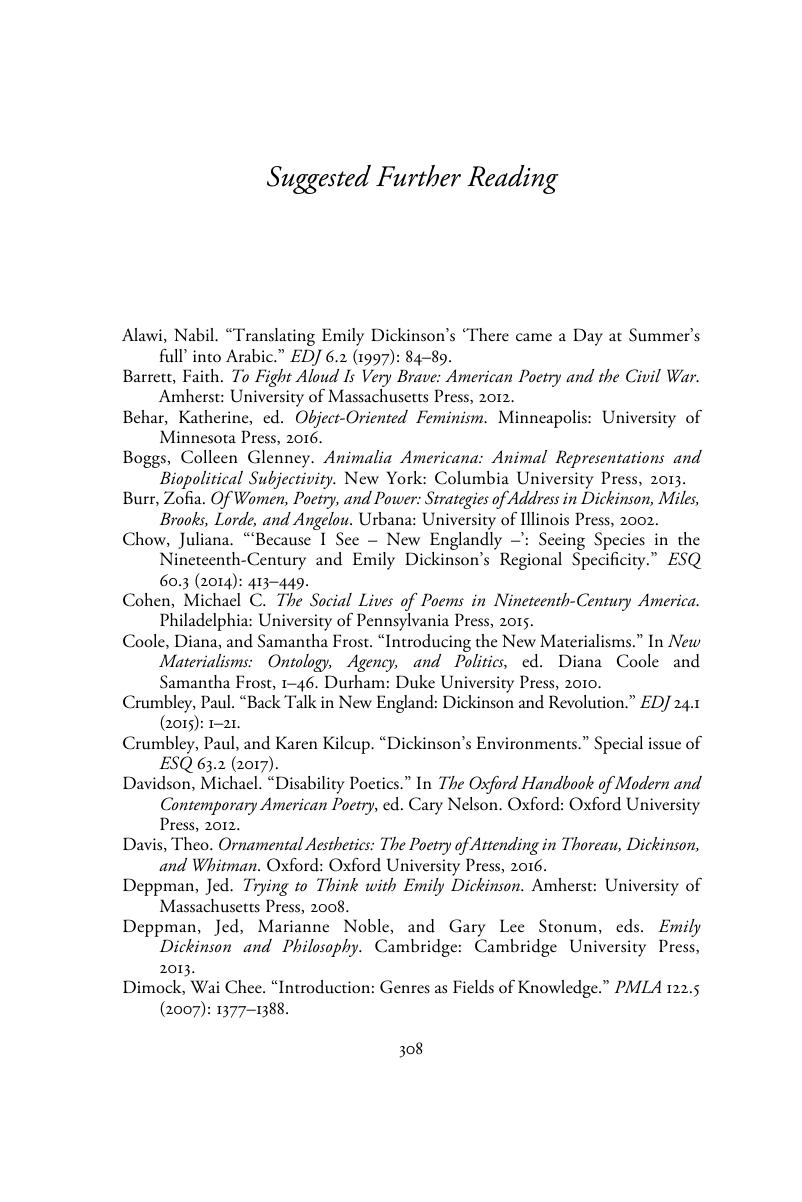Book contents
- The New Emily Dickinson Studies
- Twenty-First-Century Critical Revisions
- The New Emily Dickinson Studies
- Copyright page
- Contents
- Illustrations
- Contributors
- Acknowledgments
- Abbreviations and Textual Note
- Introduction: Dickinson Dispersed
- Part I Poetics and the Imagination
- Part II Theoretical Frameworks
- Part III Nineteenth-Century Histories
- Part IV Receptions, Archives, Readerships
- Suggested Further Reading
- Index
- References
Suggested Further Reading
Published online by Cambridge University Press: 09 May 2019
- The New Emily Dickinson Studies
- Twenty-First-Century Critical Revisions
- The New Emily Dickinson Studies
- Copyright page
- Contents
- Illustrations
- Contributors
- Acknowledgments
- Abbreviations and Textual Note
- Introduction: Dickinson Dispersed
- Part I Poetics and the Imagination
- Part II Theoretical Frameworks
- Part III Nineteenth-Century Histories
- Part IV Receptions, Archives, Readerships
- Suggested Further Reading
- Index
- References
Summary

- Type
- Chapter
- Information
- The New Emily Dickinson Studies , pp. 308 - 311Publisher: Cambridge University PressPrint publication year: 2019



